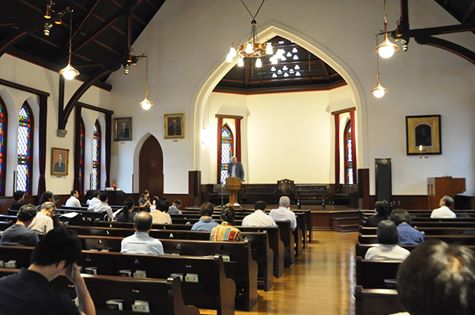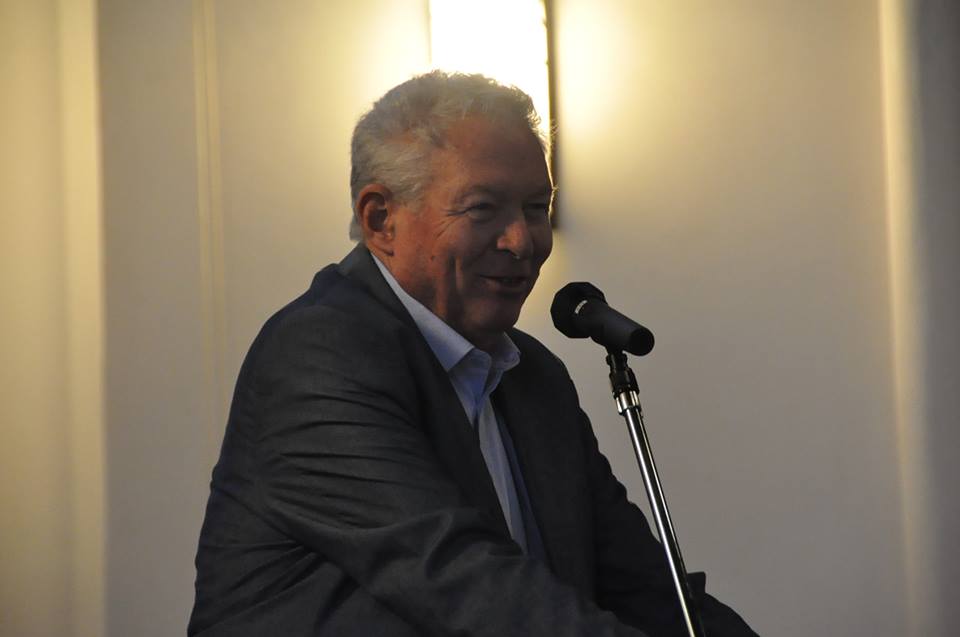Center for Interdisciplinary Study of Monotheistic Religions(CISMOR)Doshisha University
> Public Lectures > A Jewish Christian Debate in the Liturgy for PentecostPublic Lectures
A Jewish Christian Debate in the Liturgy for Pentecost
| Date: |
2015/09/03 13:00-14:30 |
|---|---|
| Place: | Doshsiha Chapel, Imadegawa Campus, Doshisha University |
| Lecture: |
Joseph Yahalom (Professor, TheThe Hebrew University of Jerusalem) |
| Summary: | |
|
Asceticism is considered a great virtue in Christianity. After becoming a follower of Paul, Thecla broke off her marriage engagement and assisted in creating a new image of women. This Christian ideal of asceticism is a shared value with Judaism. One can find a different image of women in the Torah where the Torah and Mosaic Law is represented as the daughter of God, and she (the Torah) rejects God’s plea to marry. Prof. Yahalom explained how Jewish prayers and images of women developed amidst a tense medieval relationship between Judaism and Christianity that focused on the Sabbath (the “seventh day celebration” that celebrates the giving of the Torah) and Pentecost (a celebration of the descent of the Holy Spirit meaning “fifty days” in Greek) rituals. Justin Martyr adopted Paul’s interpretation of Genesis 15:6 (“And he believed in the Lord; and he counted it to him for righteousness.”). According to this view, Abraham is righteous before circumcision due to his belief, and the circumcision order that Abraham subsequently carried out does not have any special meaning. However, unlike Paul, Martyr was not satisfied with Abraham. Using earlier figures like Adam, Enoch, and Noah, he argues that rituals like circumcision are irrelevant. Martyr asserts that if the Torah was not necessary to judge righteousness before Moses, there is no need for the Torah after the coming of Jesus. According to Martyr’s understanding, as punishment for creating the Golden Calf, God presented the Torah and other orders to the Jews. While Paul’s audience is Jewish, Martyr is addressing a non-Christian audience. This difference results in their different interpretations. On the other hand, the view of Noah of rabbis (tannaim; singular is tanna) that lived during Martyr’s time were divided. One tanna states that Noah is only righteous in comparison to others in his generation. It is possible that the tannaim attempted to downplay Noah’s image because of their conflict with Christianity. The Christian fathers emphasized spiritual connection and asserted that while the Jewish people are physical descendants of Abraham, believers in Jesus are descendants of people (like Noah) from the time of the earliest people in the human race before Jesus. Early Jewish midrash then responded to the assertion that the “chosenness” of Judaism had been relinquished to other religions. A representative interpretation can be found in Chapter 32 of Deuteronomy: “For the Lord’s portion is his people; Jacob is the lot of His inheritance.” According to this, Abraham did not pass his inheritance to Isaac because of his older brother Ishmael. Furthermore, while it was also difficult for Isaac to pass this inheritance to his sibling Jacob because of Esau, subsequently the focal point of “chosenness” shifts to Jacob, who later became Israel, and an inheritance passes down as an unbroken chain in the lineage of Israel. This interpretation recalls the New Testament parable of the vineyard and tenant farmers. In this story, the king owns the vineyard and takes away the land from the farmers because they neglected it and gives it to his son. The Jewish Shavu‘ot developed the motif of sin-based rejection in ways that fit the world of synagogue prayer. Adam is not given the Torah because of his murderous son Cain. While Noah should have prayed for his generation to be rescued, he built an ark for his family. Abraham also committed the sin of not praying when he was ordered to slaughter his son. Such arguments against the piety of the Patriarchs are expressed through the Torah, which is personified as the daughter of God. This dialogue between God and his daughter, the Torah, can be seen in the liturgical poems Seder Adonai Qanan, in which God attempts to soften the Torah’s attitude. The earlier known poem dates to around the fifth century. These poems conclude with a dialogue when Moses ascends to heaven to receive the Torah. After the poems, one finds litanies and silluq (ascent) poems. It appears that they prepared worshipers for a mystical experience with the chant “Holy, holy, holy.” What is important is that such ritual poems and mysticism were deeply related and can be found in the mystical work Shi’ur Qoma. Kotaro Hiraoka Postdoctral Fellow, CISMOR |
|
|
*Admission Free, No Reservation Necessary. *Lecture in English, Interpretation will be provided. |
|
|
20150903poster |
|

